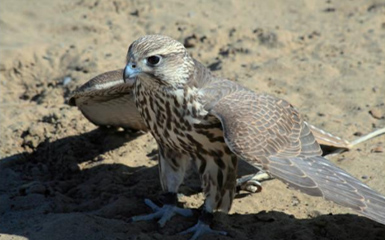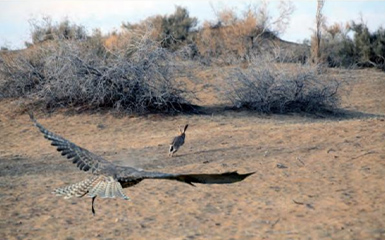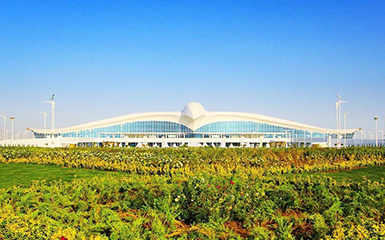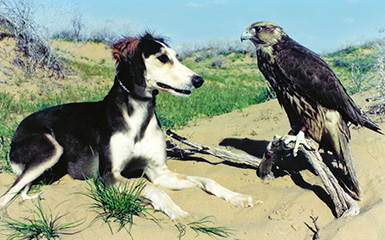The beauty of the Turkmen falcon and the graceful refinement of the local hound – tazy, fast as the wind, will impress the most demanding tourists. This magnificent duet always attends the national holidays in Turkmenistan. Hunting with birds and hounds is one of the oldest traditions of the Turkmen people and an integral part of the national culture. According to the UN research, Turkmenistan is one of the four world centres of the ancient hunting culture.
The history of the Turkmen falconry dates back to the ancient times of the ancestor of the Turkmen people – Oguz Khan and his sons. In the 7th century, he divided the lands among his grandchildren and designed 24 family signs or tamgas with species of birds of prey. Five species were considered khan and depicted a golden eagle, peregrine falcon, gyrfalcon, hawk and saker falcon, which were used in hunting at all times. There are no earlier findings related to falconry anywhere in the world.
To date, the falconry traditions have been carefully cherished in Turkmenistan. This is the responsibility of the National Falconers Society.


Traditionally, the Turkmen people used saker falcons in hunting. Little falcons are taken from the nest two weeks after their birth. For 3.5 months, the falconer intensively feeds the birds before they become fully fledged. The diet is varied, including in jerboas, pigeons, and ground squirrels. The meat of these animals contains the vital elements that strengthen the feathers of the bird. Later on, the owner teaches the falcon the hunting skills. This work takes about 6 months. A month before the start of the hunting season, the falconer should carry the bird on his hand for 1.5 hours every morning and evening. Later on, the falcon has new diet – the tolai hare – its future prey. At the same time, the bird is introduced to the future ‘colleague’ in hunting – the Turkmen hound – tazy. Six months after the birth, the dog begins to master the skills of pair hunting with the falcon.
Tazy is a unique dog breed created by the ancestors of the Turkmen people. It has short hair on the body, very sparse hair on the legs and light, long hair on the tail. The dog’s back is very flexible. The eyes are large, prominent, shiny, lively and expressive. There is no such breed anywhere else in the world, as well as there is no similar hunting when a falcon and a dog work together. The Turkmen people had a good reason to depict the silhouettes of tazy and falcon in the ornament of the ancient carpets. While feeding the bird, the owners sometimes put pieces of meat on the dog's head to train the falcon and tazy to understand each other. If the falcon even slightly wounds the hound with its beak, it will treat the latter with care afterwards. In general, two or three joint hunts are enough for a dog and a falcon to start working synchronously.
Tazy serves as a guide for the hunter. When the falcon flies a long distance and finds the prey, the dog springs from the shelter in the dunes, runs up the hill and shows the owner the way. If the hare is hiding in the saxaul thickets or hole, tazy helps the bird by driving the prey out from the cover.
The Turkmen hounds work in tandem with falcons for almost a half of their lives – 8-9 years, and then help in breeding work, teaching the young dogs. The falcon lives longer – 35-40 years. However, after five or six years of hunting, the saker falcons are released into the wild. They must give birth to progeny and raise the nestlings. This ancient tradition, extremely rare in the world, is due to the recognition of human's duty to nature.


